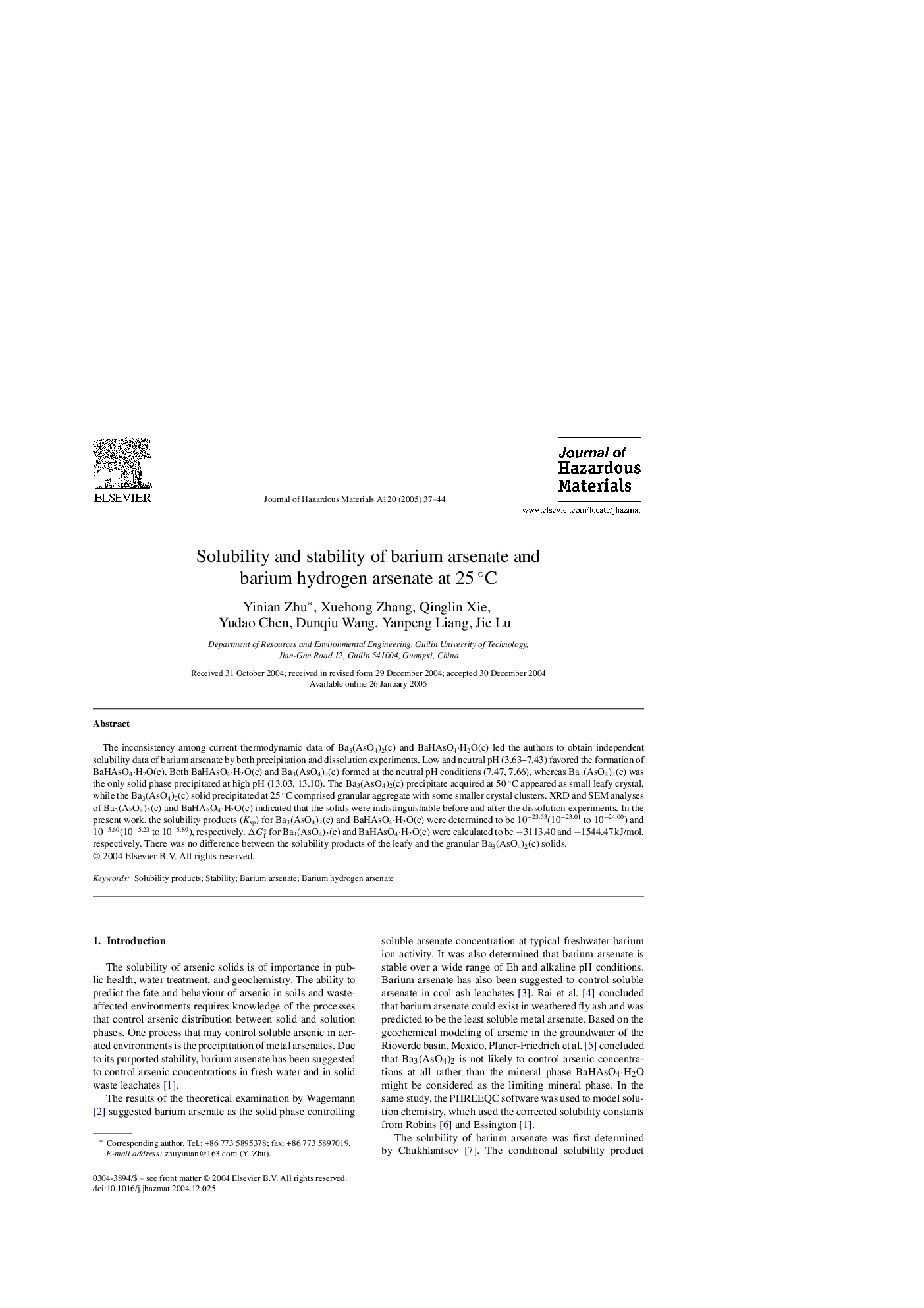| Article ID | Journal | Published Year | Pages | File Type |
|---|---|---|---|---|
| 9674299 | Journal of Hazardous Materials | 2005 | 8 Pages |
Abstract
The inconsistency among current thermodynamic data of Ba3(AsO4)2(c) and BaHAsO4·H2O(c) led the authors to obtain independent solubility data of barium arsenate by both precipitation and dissolution experiments. Low and neutral pH (3.63-7.43) favored the formation of BaHAsO4·H2O(c). Both BaHAsO4·H2O(c) and Ba3(AsO4)2(c) formed at the neutral pH conditions (7.47, 7.66), whereas Ba3(AsO4)2(c) was the only solid phase precipitated at high pH (13.03, 13.10). The Ba3(AsO4)2(c) precipitate acquired at 50 °C appeared as small leafy crystal, while the Ba3(AsO4)2(c) solid precipitated at 25 °C comprised granular aggregate with some smaller crystal clusters. XRD and SEM analyses of Ba3(AsO4)2(c) and BaHAsO4·H2O(c) indicated that the solids were indistinguishable before and after the dissolution experiments. In the present work, the solubility products (Ksp) for Ba3(AsO4)2(c) and BaHAsO4·H2O(c) were determined to be 10â23.53(10â23.01 to 10â24.00) and 10â5.60(10â5.23 to 10â5.89), respectively. ÎGf° for Ba3(AsO4)2(c) and BaHAsO4·H2O(c) were calculated to be â3113.40 and â1544.47 kJ/mol, respectively. There was no difference between the solubility products of the leafy and the granular Ba3(AsO4)2(c) solids.
Keywords
Related Topics
Physical Sciences and Engineering
Chemical Engineering
Chemical Health and Safety
Authors
Yinian Zhu, Xuehong Zhang, Qinglin Xie, Yudao Chen, Dunqiu Wang, Yanpeng Liang, Jie Lu,
